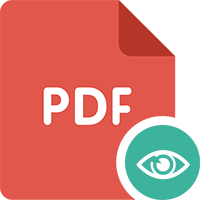Evolution of Education India: Pitfalls and the Road Ahead
Published Online: June 20, 2020
Author Details
( * ) denotes Corresponding author
In the words of Nelson Mandela, “Education is the most powerful weapon which you can use to change the world.” Education in simple words is an effort of the senior people to transfer their knowledge to the younger members of society. Education plays a key role in the development of a country – its civilization, its culture, its customs. Starting in about 3000 B.C.E., the advancement in education has undergone a sea change. From the times of yore, when teachers and students used to live together at a distant place to the digitalization of teaching methods, where one can obtain an education at their comfort levels, it has come a long way and is still going through numerous changes. The confinement of education within the four walls of a classroom, filled with chalk dust and screeches of blackboards is being transferred to online platforms, with the intervention of internet and technology. The traditional motives of education were to pass on the traditions and customs of the society one lived in, which was mainly imparted by the means of oral recitation and included the concepts of religion. Modern education, along with teachings of religion, also covers studies of advances in science and technology. The main motive of the research paper is to draw a parallelism between traditional education and modern education. Here we have tried to show how education has evolved and what are the advantages and disadvantages of this evolution and how we can improve it further.
Keywords
Traditional Education, Modern Education, digitalization, evolution
- Dogruer, N., Eyyam, R., & Menevis, I. (2011). The use of the internet for educational purposes. Procedia-Social and Behavioral Sciences, 28, 606-611.
- Glahn, R., & Gen, R. (2002). Progenies in education: The evolution of Internet teaching. Community College Journal of Research &Practice, 26(10), 777-785.
- Gupta, D., & Gupta, N. (2012). Higher education in India: structure, statistics, and challenges. Journal of Education and Practice, 3(2).
- Hirsch Jr, E. D. (1997). Why traditional education is more progressive?. The American Enterprise, 8(2), 42-46.
- Hwang, K. (2013). Educational modes of thinking in Neo-Confucianism: A traditional lens for rethinking modern education. Asia Pacific Education Review, 14(2), 243-253.
- Paul, P., Bhuimali, A., & Aithal, P. S. (2017). Indian Higher Education: With Slant to Information Technology—a Fundamental Overview. International Journal on Recent Researches In Science, Engineering & Technology, 5(11), 31-50.
- Simoncini, G. (2017). Globalizing Higher Education. MIND Journal, (3), 1-10
- TIMES, T. E. (DEC'22, 2019). https://economictimes.indiatimes.com/news/politics-and-nation/whatsailing-indias-midday-meal-scheme/articleshow/72918265.cms?from=mdr
- TIMES, T. E. (JAN'16,2020). https://economictimes.indiatimes.com/industry/services/education/rs-7200-crore-scholarship-plan-for-reserved-class/articleshow/7328634.cms?from-mdr
 Abstract Views: 1
Abstract Views: 1
 PDF Views: 219
PDF Views: 219

